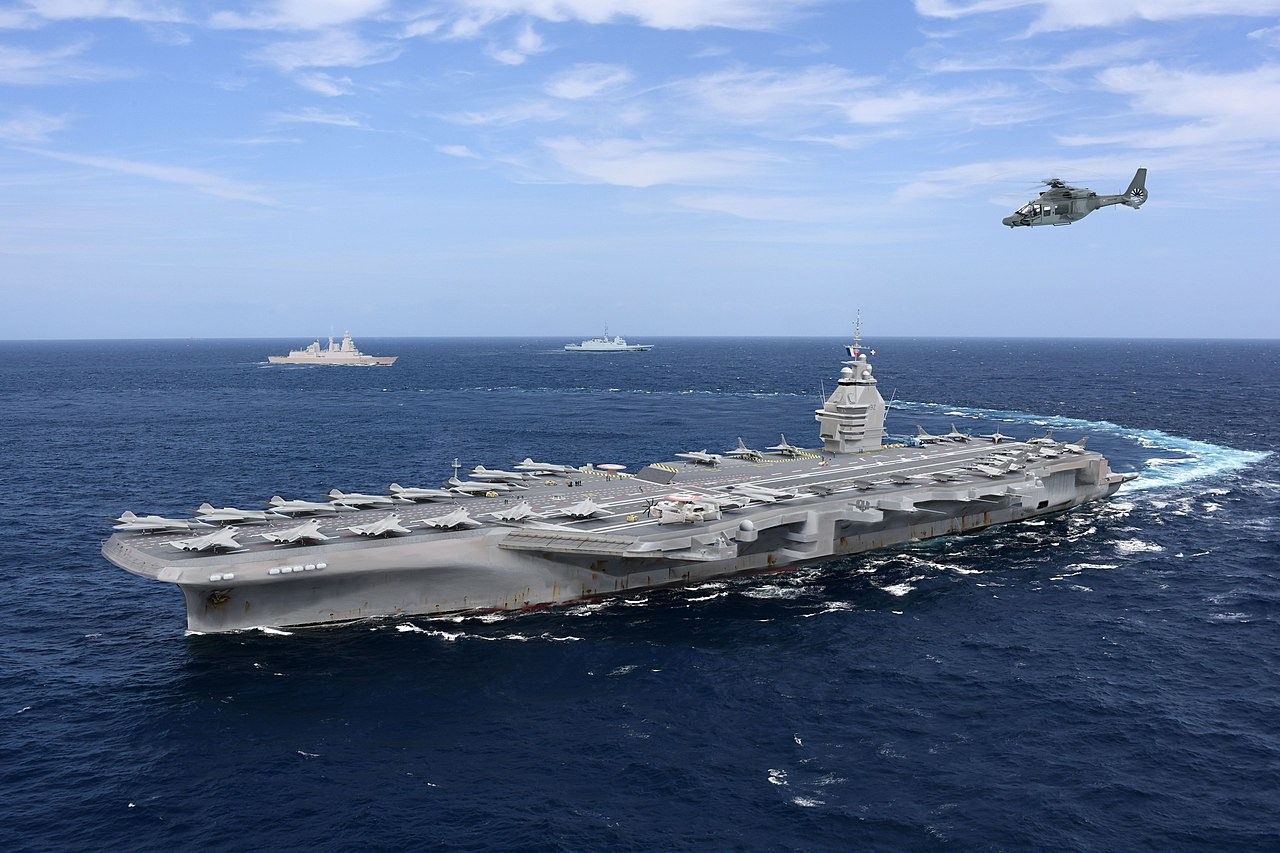France’s ambitions for a new era in naval power took a significant step as the General Directorate for Armaments (DGA) recently confirmed the placement of the initial orders for the nuclear propulsion system of the French Navy’s future Porte-Avions Nouvelle Génération (PANG) aircraft carrier.
This news comes as China has started sea trials of its first super-carrier Fujian, with a reported displacement of 80,000 tons, and the ex-Indian naval chief desiring to collaborate with France for a nuclear-propelled carrier.
It must be noted that the Fujian is not nuclear-powered and will have to rely on conventional fuel, unlike France’s current aircraft carrier, Charles de Gaulle, and the upcoming one. Even the US carriers are nuclear-powered, giving them the power to stay at sea for much longer durations.
The French Navy is set to engage a network of industrial suppliers and subcontractors in the nuclear sector under a substantial €600 million ($640 million) contract.
These crucial orders lay the groundwork for manufacturing key elements essential for the propulsion system, paving the way for constructing the entire aircraft carrier.
Naval Group, the French defense prime, assumes a pivotal role in this endeavor, overseeing the industrialization and production of the main components of the nuclear boiler rooms. Their responsibilities extend across multiple sites, including Cherbourg and Nantes-Indret.
Additionally, Chantiers de l’Atlantique will supervise modifying its industrial facilities located in Saint-Nazaire to accommodate the construction phase.
TechnicAtome, the prime contractor for nuclear boiler rooms from its base in Aix-en-Provence, is tasked with the design and industrial supervision necessary for the construction process.
The move is crucial for France in its plans to start construction of a next-generation aircraft carrier. Known as the Porte-Avions de Nouvelle Génération (PANG), the project commenced its preliminary studies in October 2018.
These efforts were followed by extensive “risk mitigation & innovation studies” between January 2021 and December 2023, alongside “preliminary design studies” from Q1 2021 to Q1 2023.

The PANG program is now in the “definition phase,” which is scheduled to conclude by December 2025 with the “system functional review” milestone. The decision to proceed with the development and production phase is anticipated by the end of 2025 or early 2026, initiating a decade-long span from 2026 to 2036.
In this timeframe, several critical milestones are earmarked for achievement, including the preliminary design review in Q4 2028, the critical design review in Q4 2029, and the commencement of the first sea trials by the end of 2035 or early 2036.
The delivery and commissioning of the carrier are projected for the end of 2036 or early 2037 and the end of 2037 or early 2038, respectively.
The PANG (porte-avions de nouvelle génération) Program
The Porte Avion Nouvelle Génération (PANG), a futuristic nuclear-powered aircraft carrier set to replace the current Charles de Gaulle aircraft carrier in 2038, promises to be a marvel of engineering, boasting unparalleled power and capabilities that will secure France’s position as a maritime powerhouse for decades to come.
The PANG represents a significant leap forward in naval technology. With a displacement of 75,000 tonnes and measuring 310 meters in length and 85 meters at its widest point, the vessel dwarfs its predecessor.
Powered by two cutting-edge nuclear reactors provided by TechnicAtome, the PANG will feature three shaft drives, ensuring enhanced maneuverability and agility.
Despite having one less shaft drive than its larger American counterparts, the PANG’s nuclear propulsion system will enable it to maintain exceptional speed and endurance, with the ability to remain at sea for up to a decade without refueling.
Key to the PANG’s superiority will be its advanced weaponry and aircraft complement. The carrier is designed to accommodate approximately 30 next-generation fighters or Rafale-M, with up to three E-2D Advanced Hawkeyes and a fleet of unmanned aircraft.
The PANG, equipped with two or three 90-meter electromagnetic catapults (EMALS) manufactured by General Atomics, will be able to launch aircraft with efficiency and precision.
Central to the project is the oversight of the CEA (Commissariat à l’énergie atomique et aux énergies alternatives) atomic energy commission, which will ensure the seamless integration and operation of the PANG’s nuclear reactors. The reactors will be designed to be refueled only once every 10 years.
Driving the carrier forward will be a state-of-the-art propulsion system featuring K-22 nuclear reactors engineered to deliver 220 to 230 megawatts. This will enable the vessel to attain speeds of 30 knots and support advanced systems like EMALS and directed energy weapons.
Adopting nuclear propulsion offers several advantages over conventional methods, including enhanced endurance due to reduced refueling needs and heightened availability.
The latest contract will procure advanced materials necessary for the vessel’s nuclear propulsion, specifically targeting components such as the boiler chambers, containment structures, and systems for converting steam energy.
- Contact the author at ashishmichel(at)gmail.com
- Follow EurAsian Times on Google News